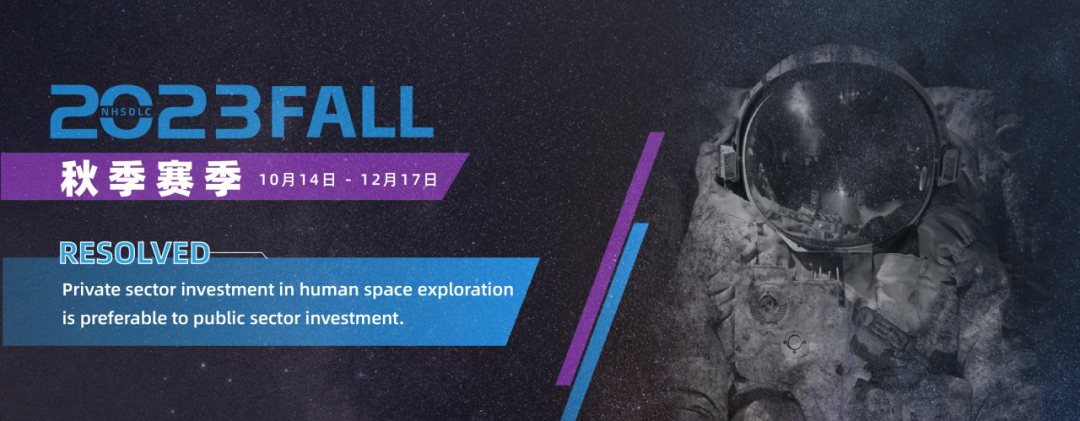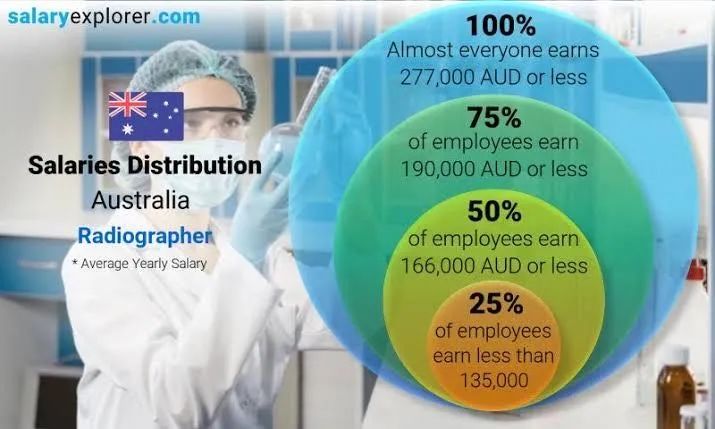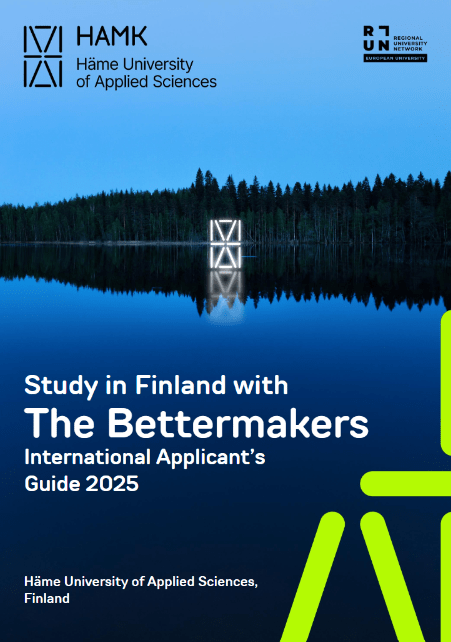
暑期过去了,秋季赛学术资料包也发布了有一段时间,不知道大家的备赛进度如何鸭(Doge
今天我们为大家奉上秋季常规赛Sample Case,帮助大家研究资料包的同时更加高效地备赛!
科技的进步向来是推动人类社会发展的关键力量。在历史上,科技发展即依赖个人力量的单点突破,也需要公共资源的集约化效应推动更大范围的进步。而具体到航天领域也同样如此:私人投资在某些关键的前沿领域有更高的效率,而公共部门则能够兼顾更多人的福祉。
除此之外,秋季辩题领域涉及到非常丰富的理论维度,大家不妨充分发挥自己的“理论想象力”,构建出独属于你的论证路径。而此次的Sample Case也是抛砖引玉,希望能够帮助大家打开思路。
接下来,让我们一起看看 今天Sample Case的具体内容吧~

Sample Case
PRO
Resolved: Private sector investment in human space exploration is preferable to public sector investment, we affirm.
Our sole contention is asteroid mining.
Resources per capita are declining around the world NOW. United Nations University 121 explains, from 1990 to 2008, though GDP has grown, “natural resources per capita declined by 33% in South Africa, by 25% in Brazil, by 20% in the United States, and by 17% in China.”
This is unsustainable. The UNEP 192 gives three reasons for this:
1. The extraction and processing of materials, fuels and food contribute half of total global greenhouse gas emissions and over 90 percent of biodiversity loss and water stress.
2. Resource extraction has more than tripled since 1970, including a fivefold increase in the use of non-metallic minerals and a 45 per cent increase in fossil fuel use.
3. By 2060, global material use could double to 190 billion tonnes (from 92 billion), while greenhouse gas emissions could increase by 43 per cent.
Critically, natural resources are integral to technology, such as lithium ion batteries. Limon 233 of El Pais explains, a typical household has 10 batteries. Yet, “the European Commission’s Joint Research Center (JRC) concluded that there is not simply enough raw material for so many batteries.”
Indeed, Limon quantifies, “increasing consumption through 2050 will drive demand for battery raw materials 30-40% higher than the available reserves.” Ironically, this is because of climate change mitigation policies, as Limon explains, “zero-emission policies are driving demand.”
In short, natural resources are being depleted in the status quo, yet are critical to common technologies. There must be a way to get more natural resources.
Asteroid mining improves quality of life in this regard, three warrants. First, asteroid mining decreases carbon emissions, which increases the efficacy of climate change mitigation policies.
According to the MIT Technology Review 18,
A kilogram of platinum mined from an asteroid would release some 150 kilograms of CO2 into Earth’s atmosphere. However, economies of scale from large asteroid-mining operations could lower this to about 60 kilograms of CO2 per kilogram of platinum. [On Earth], platinum mining generates around 40,000 kilograms of carbon dioxide [per kilogram].
That is almost 700 times more carbon dioxide when mining on Earth than on an asteroid.
Second, asteroid mining will generate lots of economic value.
According to Yarlagadda 224,
The development of asteroid mining technology may very well be a worthwhile endeavor due to the extremely valuable resources that asteroids have to offer. Just the top 10 most cost-effective asteroids would produce a profit of around US$1.5 trillion. One asteroid has been reported to contain US$700 quintillion worth of gold, enough for every person on earth to receive about US$93 billion.
Even if this quantity of money injected into the economy does harm, the increased accessibility of the vast amount of resources increases the amount of technological development that can occur.
Third, asteroid mining decreases unethical mining.
According to Yarlagadda 22,
Asteroid mining would reduce the prevalence of inhumane or otherwise illegal practices surrounding human mining operations. The Democratic Republic of the Congo has responded to the growing global demand for batteries and electric vehicles through a deplorable record of child labor and fatal accidents. Asteroid mining as an alternative to traditional mining might be the kind of change the world requires to end these abuses of power.
And the warrant here is simple – humans cannot go to asteroids, so we would not be exploiting children to mine on asteroids, but rather more robotic means.
Private sector investment is key to achieve this goal. Yarlagadda 22 explains, “asteroid mining remains hypothetical, mostly because of its exorbitant cost.” One project, “despite only being projected to return between 400 grams and 1 kilogram of material, is projected to take 7 years and cost over US$1 billion.”
Now this is not to say that all companies are hugely wealthy, but this is money that is unlikely to come from taxpayer hands, simply because that would never garner the support of people who would never vote to give their money to a project that will not improve their lives. As such, probabilistically speaking, Yarlagadda concludes, “such operations would be heavily driven by private corporations”
The terminal impact is mitigating climate change
Yarlagadda 22 explains,
Asteroid mining would prevent the need for traditional in-the-ground methods of mining, which release toxic chemicals such as lead and arsenic into waterways and contribute to acid mine drainage. Asteroid mining could also provide an avenue for the creation of solar power satellites, a potentially consistent source of clean energy.
Indeed, Aziz 155 confirms, space mining minimizes ecological damage:
While mining on Earth can be highly destructive to natural habitats — resulting in deforestation, soil erosion, chemical contamination, and the pollution of groundwater — mining in space doesn't damage any natural habitats.
Overall, quality of life can improve with more resources from asteroids, which is more likely under private investment because taxpayers are less involved. Thus, we affirm.
Sample Case
CON
Resolved: Private sector investment in human space exploration is preferable to public sector investment, we negate.
Our sole contention is, colonization of space.
Without colonization, humanity’s future looks awfully grim. Smith and Davies 2012:
Natural calamities that occur on Earth ... could bring about the downfall of global civilization or altogether extinguish the human species. For all of these reasons, we must begin to develop outposts of humanity outside of Earth, if we are genuinely concerned about our collective future.
Subpoint A, public sector investment is critical.
Three major reasons why this true.
First, simply, scale. The OECD6 explains,
Public investments represent the bulk of funding in space activities, with G20 governments’
space budgets amounting to some USD 79 billion in 2019.
The use of the phrase, bulk, directly implies the scale of this funding: substantial.
Second, regulations. Svetla Ben-Itzhak 227 from the Washington Post explains,
While private companies have made considerable strides in popularizing space, national governments dictate the rules and provide much of the funding, securing their central role in space endeavors.
Svelta thus concludes,
Despite the impressive growth of the commercial space sector, governments will continue to play a large role in commercial space enterprises, and in space travel and exploration.
Third, the market’s growth trajectory. Morgan Stanley8 explains,
While the most recent space exploration efforts have been driven by [a] handful of private companies, the establishment of a sixth branch of the U.S. military in 2019—the “Space Force”—along with growing interest from Russia and China, means public-sector investment may also increase in the coming years.
In short, the public sector has growing interest, and is already responsible for a huge amount of funding. To say that other funding is more important signals that public funding decreasing is okay, because other funding sources “are more important anyway”
Critically, citing Morgan Stanley, public investment includes “more accessible, less expensive reach into outer space … with potential opportunities in fields such as satellite broadband, high-speed product delivery and perhaps even human space travel.”
We have all seen what happens when private companies fund something – the prices are extremely high as we can see in the pharmaceutical industry, because these companies are profit centric. The public sector is service centric, making their funding critical to making space accessible.
Too much private sector funding and space becomes Hawaii for rich elites, while with public sector funding, it at least becomes an option for lay people.
Subpoint B, funding is critical to colonization.
Two reasons for this.
First, government space agencies contain repositories of knowledge surrounding space exploration. Bignami & Sommariva 139 explain,
Funding for this early phase [of exploration] should be based on large scale donors and endowment contributors and crowd funding. Large scale donors should include wealthy private individuals, private foundations and space agencies, as these last ones are the depository of the knowledge on space technology.
This is critical, as without knowledge, money cannot go anywhere; it will be spent, but wasted.
Second, government funding could rekindle private sector investment, making it integral to overall funding for exploration. Same authors further explain
The discovery of a habitable planet would rekindle the interest of individuals capable of donating significant sums of money, which are considered a primary source of seed capital for building an endowment.
As such, things like government funded research increase the incentive for private sector investment, without making such investment necessarily more preferable than public sector investment.
Subpoint C, the impact is phenomenally huge.
Every second we don’t colonize ends 1037 future human lives – outweighs literally any other impact. Bostrom, FAMOUS philosopher on extinction, 2003 explains
Unused energy is being flushed down black holes. Our great negentropy is being irreversibly degraded into entropy on a cosmic scale. These are resources that an advanced civilization could have used to create value-structures, such as sentient beings. One recent paper speculates, the loss of potential human lives in our own galactic supercluster is at least ~1046 per century of delayed colonization.
If we do some division this is about 1037 potential human lives per second. Because public sector investment helps spur investment as a whole, we are minimizing the loss of potential life. Thus, we negate.
Reference
1.United Nations University 12 (United Nations University, 6-17-2012, https://unu.edu/news/worlds-resources-being-depleted-says-inclusive-wealth-report-2012.html, United Nations University, World's resources being depleted says Inclusive Wealth Report 2012) // AL 9-15-2022
2.https://www.unep.org/news-and-stories/story/were-gobbling-earths-resources-unsustainable-rate
3.https://english.elpais.com/economy-and-business/2023-03-08/global-demand-for-batteries-is-depleting-the-supply-of-raw-materials.html
4.Yarlagadda 22 (Shriya Yarlagadda, 4-8-2022, https://hir.harvard.edu/economics-of-the-stars/, Harvard International Review, Economics of the Stars: The Future of Asteroid Mining and the Global Economy) // AL 9-15-2022
5.Aziz 15 (John Aziz, 1-11-2015, https://theweek.com/articles/462830/how-asteroid-mining-could-add-trillions-world-economy, Week, How asteroid mining could add trillions to the world economy) // AL 9-15-2022
6.https://www.oecd.org/sti/inno/space-forum/measuring-economic-impact-space-sector.pdf
7.https://www.washingtonpost.com/politics/2022/01/11/companies-are-commercializing-outer-space-do-government-programs-still-matter/
8.https://www.morganstanley.com/ideas/investing-in-space
9. Giovanni F. Bignami & Andrea Sommariva 13 [Giovanni F. Bignami & Andrea Sommariva, 1-1-2013, https://link.springer.com/chapter/10.1007/978-88-470-5337-3_5#Sec5, SpringerLink, Financing of Space Exploration and Colonization, accessed 9-3-2023]/AL
秋季备赛资料陆续解锁中 大家记得持续关注我们的推送哟~













